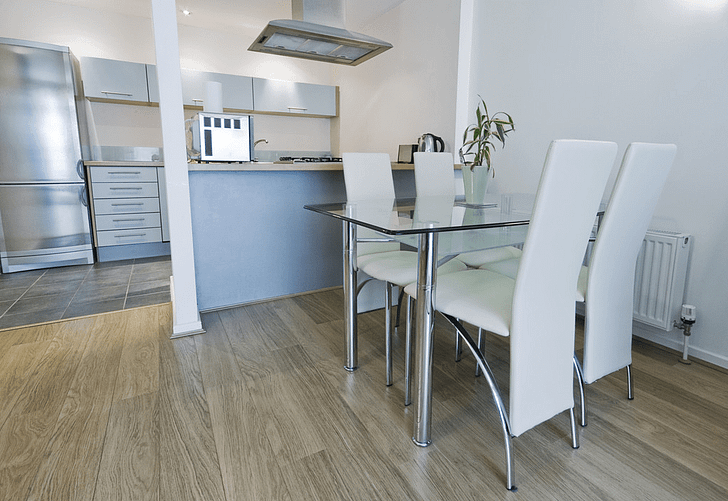Living with dust allergies can be a constant struggle, as even the smallest amount of dust can trigger uncomfortable symptoms.
However, by implementing a proper cleaning routine and following a few essential tips, you can significantly reduce the presence of dust in your home and alleviate allergy symptoms.
In this blog post, we will discuss effective cleaning techniques, tools, and products that will help you maintain a dust-free environment.
Understanding Dust Allergies
Before diving into cleaning tips, it's crucial to understand what dust allergies are and how they affect your health.
Dust allergies occur when your immune system overreacts to particles found in dust, such as pollen, pet dander, mold spores, and dust mites. Common symptoms include sneezing, coughing, a runny nose, itchy eyes, and even respiratory difficulties.
By keeping your living space clean and free of dust, you can minimize exposure to these allergens and alleviate symptoms.
Cleaning Tips for Dust Allergies
1. Creating a Dust-Free Environment
To create a dust-free environment, you need to implement some lifestyle changes and establish a regular cleaning routine.
Here are some key steps to follow:

1. Minimize Clutter
Dust tends to accumulate in cluttered areas, making it harder to clean effectively.
Start by decluttering your living space, keeping only the essentials. By minimizing clutter, you'll have fewer surfaces for dust to settle on and more accessible areas to clean thoroughly.

2. Opt for Hard Flooring
Carpets and rugs tend to trap dust, making them a breeding ground for allergens.
If possible, replace carpets with hard flooring options like hardwood, laminate, or tile.
These surfaces are easier to clean and don't harbor dust mites and allergens as much as carpets do.

3. Use Dust-Proof Covers
Invest in dust-proof covers for mattresses, pillows, and bedding.
These covers act as a barrier between you and dust mites, reducing your exposure to allergens while you sleep.
Wash these covers regularly in hot water to kill any dust mites that may have accumulated.

4. Maintain Optimal Humidity Levels
Keeping humidity levels between 30% and 50% can help control dust mites and prevent mold growth, both of which can trigger allergies.
Use a dehumidifier in damp areas like the basement or bathroom and ensure proper ventilation throughout your home.
2. Effective Cleaning Techniques
Now that you've set the stage for a dust-free environment let's explore some effective cleaning techniques to keep your home allergen-free:

1. Dusting Properly
Dusting is a crucial step in maintaining a dust-free home.
However, it's important to do it correctly to prevent stirring up dust particles and worsening your allergies.
Here's how to dust effectively:
- Use a microfiber cloth or electrostatic duster instead of traditional feather dusters that tend to spread dust around.
- Start from the top and work your way down, ensuring that you reach all surfaces including furniture, shelves, light fixtures, and vents.
- Don't forget to dust hard-to-reach areas like ceiling fan blades and behind furniture.
- Wash or replace your duster regularly to avoid redistributing dust.

2. Vacuuming the Right Way
Vacuuming is another critical cleaning task that helps remove dust from carpets, rugs, and upholstery.
However, if not done properly, it can kick up allergens into the air.
Follow these tips for effective vacuuming:
- Use a vacuum cleaner equipped with a HEPA (High-Efficiency Particulate Air) filter to trap small particles like dust mites and pollen.
- Vacuum all carpeted areas at least once a week.
- Pay attention to corners, edges, and hard-to-reach spots where dust tends to accumulate.
- Empty the vacuum bag or canister outside after each use to prevent allergens from re-entering your living space.

3. Mopping Floors Regularly
In addition to regular vacuuming, it's essential to mop hard floors regularly to remove any remaining dust particles.
Here's how to mop effectively:
- Use a microfiber mop or a damp cloth instead of a traditional broom that may just push dust around.
- Use a mild cleaning solution suitable for your flooring type.
- Pay special attention to high traffic areas and spots prone to collecting dust.
- Allow the floors to dry completely before walking on them.
3. Recommended Cleaning Tools and Products
Having the right cleaning tools and products can make a significant difference when it comes to effectively removing allergens from your home.
Here are some recommended options:

1. Microfiber Cloths
Microfiber cloths are excellent for capturing and trapping dust particles without spreading them around.
They are reusable and can be washed easily.

2. HEPA Filter Vacuum Cleaner
Investing in a vacuum cleaner with a HEPA filter ensures that the captured allergens remain trapped inside the vacuum bag or canister instead of being released back into the air.

3. Electrostatic Dusters
Electrostatic dusters are designed to attract and hold onto dust particles instead of just pushing them aside.
They are ideal for dusting delicate surfaces like electronics or decorations.

4. Steam Cleaners
Steam cleaners are an effective tool for deep-cleaning carpets and upholstered furniture while killing off allergens like dust mites and mold spores using high-temperature steam.

5. Natural Cleaning Products
Consider using natural cleaning products that are free from harsh chemicals and fragrances.
These products are less likely to trigger allergies and are safer for both you and the environment.
4. Allergen-Proofing Your Bedroom
Since we spend a significant amount of time in our bedrooms, it's essential to create an allergen-proof space for better sleep and allergy relief.
Here are some tips specifically for your bedroom:

1. Invest in Hypoallergenic Bedding
Consider using hypoallergenic bedding, including pillows, mattress covers, and comforters.
These products are specially designed to repel allergens and provide a barrier between you and dust mites.

2. Wash Stuffed Toys and Curtains
If you have stuffed toys or curtains in your bedroom, make sure to wash them regularly in hot water to eliminate allergens.

3. Avoid Carpeting
If possible, avoid having carpeting in your bedroom as it can harbor dust mites and other allergens.
Opt for hardwood or laminate flooring instead, which is easier to keep dust-free.

4. Keep Pets Out of the Bedroom
If you have pets, it's best to keep them out of your bedroom as they can bring in allergens like pet dander that may trigger your allergies.
5. Maintaining a Dust-Free Workspace
For those who work from home or spend a significant amount of time at their desks, it's crucial to maintain a dust-free workspace.
Here are some tips to help you achieve that:

1. Clean Your Desk Regularly
Wipe down your desk surface, keyboard, mouse, and other frequently touched items with a microfiber cloth or disinfecting wipes to remove dust and allergens.

2. Use an Air Purifier
Consider placing an air purifier near your workspace to capture airborne allergens and improve the air quality in your immediate vicinity.

3. Organize Cables and Wires
Tangled cables and wires can accumulate dust easily.
Keep them organized and off the floor by using cable management solutions or zip ties.
6. Outdoor Cleaning Tips
While it's essential to maintain a clean and dust-free environment indoors, don't forget about the outdoor areas that can contribute to dust allergies.
Here are some outdoor cleaning tips:

1. Regularly Clean Exterior Surfaces
Dust and pollen can accumulate on outdoor surfaces like windows, walls, and patio furniture.
Regularly clean these areas with a gentle detergent or a hose to remove allergens.

2. Trim Trees and Shrubs
If you have trees or shrubs near your home, make sure to trim them regularly to prevent pollen and leaves from accumulating on your property.

3. Keep Outdoor Shoes Outside
Prevent outdoor allergens from being tracked inside by leaving your shoes outside or in an entryway mat.
This reduces the amount of dust and pollen that enters your home.
7. Additional Tips for Allergy Relief
In addition to maintaining a clean living space, there are several other measures you can take to further alleviate allergy symptoms:

1. Keep Windows Closed
To prevent outdoor allergens from entering your home, keep windows closed during peak allergy seasons when pollen counts are high.

2. Use Air Purifiers
Invest in high-quality air purifiers equipped with HEPA filters to capture airborne allergens and improve indoor air quality.

3. Wash Bedding Frequently
Wash your bedding, including sheets, pillowcases, and blankets, in hot water at least once a week to kill any allergens present.

4. Wear Protective Gear
When cleaning or doing other household chores that may stir up allergens, consider wearing a mask to reduce your exposure.

5. Regular HVAC Maintenance
Schedule regular maintenance for your heating, ventilation, and air conditioning (HVAC) system to ensure proper filtration and minimize the circulation of allergens throughout your home.

8. Seeking Professional Help
If despite your best efforts, your allergies persist, it may be time to seek professional help.
An allergist can help identify specific allergens that trigger your symptoms and recommend appropriate treatment options such as medication or immunotherapy (allergy shots).
Additional cleaning tips you may find helpful:
Looking for recommendations for the cleaning supplies to get?
Continue reading on:
- 20 Best Cleaning Solution for Hardwood Floors
- 20 Best Cleaning Robots
- 20 Best Cleaning Gloves
- 30 Best Cleaning Laundry Detergents
- 30 Best Cleaning Solution for Laminate Floors
- 50 Best Cleaning Tools
- 50 Best Cleaning Supplies
- 59 Best Cleaning Products
- 20 Top Cleaning Gadgets for a Sparkling Home
- 21 Top Cleaning Tools for a Sparkling Home
- 10 Top Cleaning Products
Conclusion
Living with dust allergies doesn't have to be overwhelming.
By implementing these essential cleaning tips, creating a dust-free environment, using effective cleaning techniques and tools, and taking additional measures for allergy relief, you can significantly reduce allergen exposure and enjoy a more comfortable living space.
Remember that consistency is key when it comes to maintaining a clean and allergen-free home.
